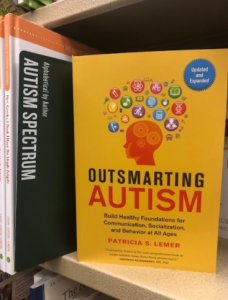The latest information on autism (ASD) and how optometrists can provide life-changing interventions.
Studies of eye clinic records suggest that children with autism (ASD) and other special needs are prone to serious vision problems.
Journal of AAPOS, 2019
Recent publication of Journal of AAPOS (American Association for Pediatric Ophthalmology and Strabismus) showed among 2,555 children at a University of California Davis’ eye clinic that:
- 71% of children with ASD had a visual problem, of these:
- 42% had significant refractive error
- 32% had strabismus (eye turn)
- 19% had amblyopia (lazy eye)
The most common vision problems experienced by children with ASD include strabismus (eye turn), in which the eyes are misaligned, and amblyopia (lazy eye), in which poor vision in one or both eyes results from issues in the early stages of visual development.
If your child has autism and you find they have vision problems, the Find an Eye Doctor directory lists eye doctors near you that are experienced in treating children with autism.
SEE RELATED: Vision and Autism: Part 1
Autism and vision problems
Over 7 out 10 individuals with autism experience vision problems.
Visual symptoms of autism can include:
- Difficulty maintaining eye contact
- Fleeting peripheral glances
- Side viewing
- Staring at spinning objects or light
- Reduce visual attention span
People with autism often use visual information inefficiently.
Visual issues can include coordinating their peripheral and central vision, this is usually displayed by having difficulty or the inability to follow an object with their eyes.
These children tend to scan or look off to the side of an object, instead of looking directly at the object and might also have difficulty maintaining visual attention.
Crossed eyes, lazy eye and eye movement disorders are common in children on the autistic spectrum.
Poor integration of peripheral and central vision
Those with autism are found to ignore peripheral vision and remain fixated on a central point of focus for long periods of time.
When there is poor integration of peripheral and central vision it can lead to difficulties in integrating and processing visual information in individuals with autism. When visual processing is interrupted cognitive, speech, motor, and perceptual abilities can also be affected.
Hypersensitive vision
It is known that many people with autism are visually defensive.
Visually defensive people might have hypersensitive vision and avoid contact with specific visual inputs. They have a hard time visually “holding still” and frequently rely on a constant scanning of visual information.
Vision exams for people with autism
As every person’s eyes are different. The way a person’s eyes are evaluated will vary depending on their individual levels of physical and emotional development.
Evaluation of the visual skills are vital to understand the functioning of the eyes and visual system, to determine if vision therapy could provide significant benefit.
Specific testing of the visual system is often done while the patient performs specific activities while wearing special lenses. For example, observing a patient’s postural compensation and adaptations will be made as they walk, sit, stand, or catch and throw a ball.
These tests help to analyze the strengths and weaknesses of the visual system and determine the best way forward to improve the quality of life.
Treatment of visual problems
The results of the vision exam can help determine if specific optical lenses are needed to compensate for farsightedness, nearsightedness, and astigmatism.
Vision therapy
Vision therapy is a successful process to help treat vision issues for those with autism and special needs. The activities in a vision therapy program can be used to stimulate general eye movements, visual arousal, and the central visual system.
The goal of vision therapy is to help autistic individuals to:
- gain peripheral stability
- gain more efficient eye coordination
- organize visual space
- attend to and appreciate central vision
- improve visual information processing
If your child has autism and you find they have vision problems, the Find an Eye Doctor directory lists eye doctors near you that are experienced in treating children with autism.
LEARN MORE: Vision for Special Needs
If you think vision therapy will help your autistic child, contact an eye doctor near you to get your child’s eyes tested and to discuss the best treatment options to improve their quality of life.


